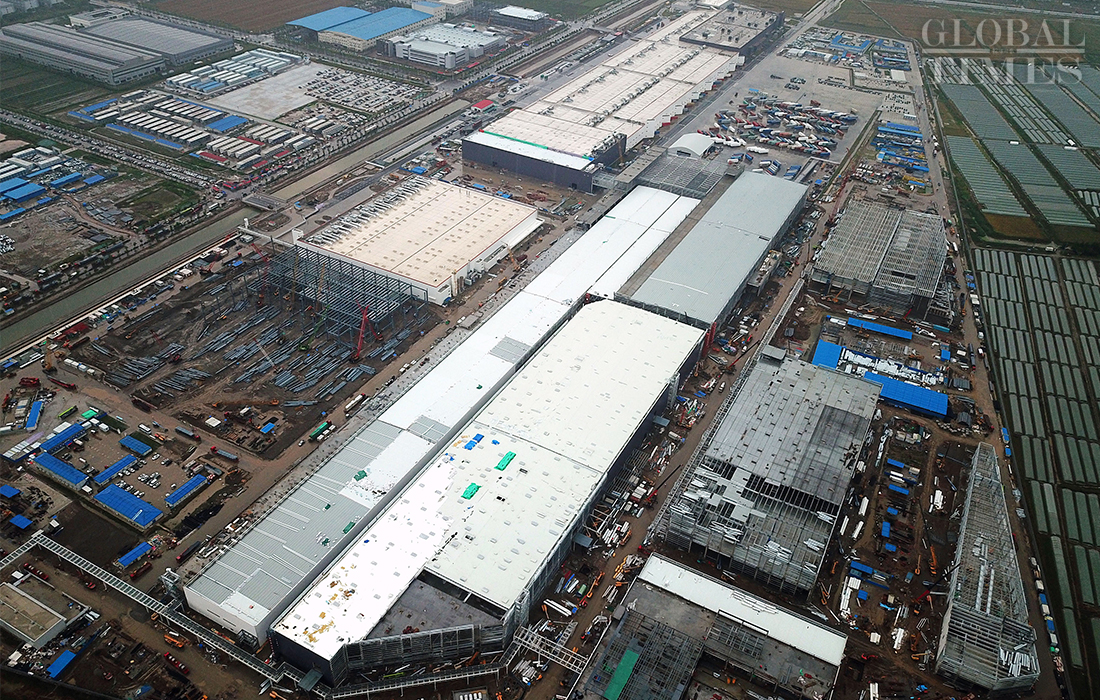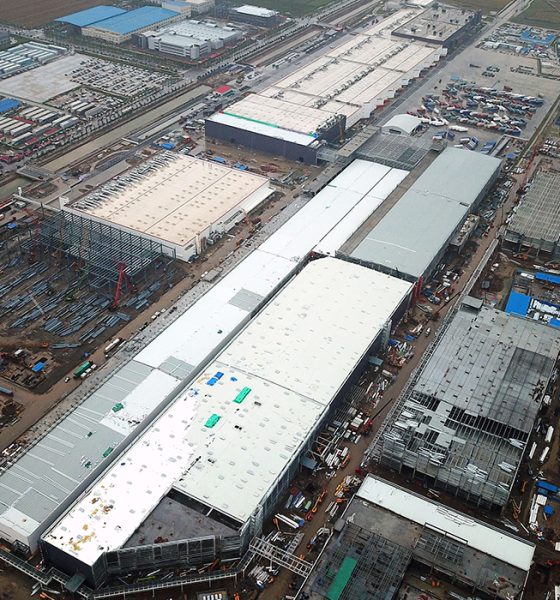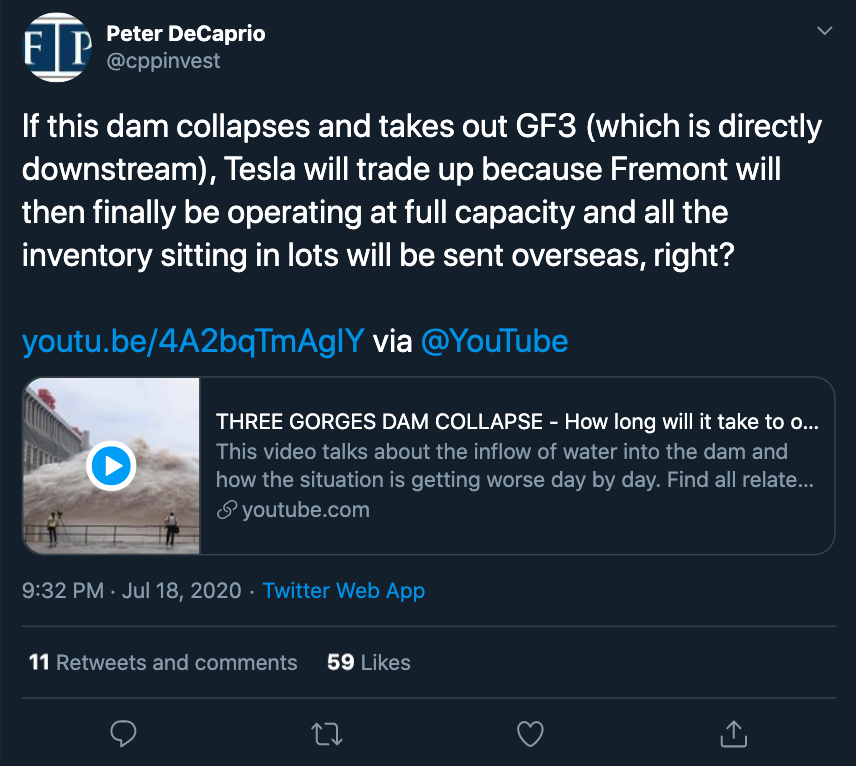

News
Tesla bears ponder China dam collapse to ‘take out’ Giga Shanghai — but there’s a catch
Tesla (NASDAQ:TSLA) may be carrying a lot of momentum this week as it heads towards what could very well be its most important second quarter earnings report to date, but the company still attracts a notable number of passionate critics. Among these critics is the TSLAQ group, which includes short sellers who are looking to make a profit if TSLA stock were to dive. TSLAQ has had its own fair share of interesting wishes for Tesla, its customers, and its facilities, but a recent post about Giga Shanghai may have just taken the cake.
China is currently experiencing one of its worst flood seasons, and the Three Gorges Dam, located in Central China’s Hubei Province and one of the world’s largest hydropower projects, is feeling the pressure. According to a report from The Global Times, the facility has been handling the worst of the ongoing floods so far. However, the dam is not completely out of danger yet. David Shankman, a geographer with the University of Alabama who studies Chinese floods, noted in a statement to Reuters that the facility may not be able to fully handle this year’s record floodwaters.

Under such a situation, Tesla bear Peter DeCaprio, a partner at Boston, MA based Flow Point Partners, LLC, decided to air his thoughts on the matter. The critic suggested that if the dam were to collapse, it could “take out” Gigafactory Shanghai. This scenario would be a catastrophe for Tesla if it were to happen, of course, especially considering that the China based plant is currently ramping its production of the Model 3 sedan.
Unfortunately for the TSLAQ member, a scenario where the Three Gorges Dam would adversely affect Tesla’s electric vehicle plant is unlikely to happen. This is because the river that the dam is handling exits a delta north of Shanghai, and Tesla’s Gigafactory happens to be south of the city. That’s a long way away from the river itself — about 1,000 km in fact. Callous wishes to people who would be affected by such a catastrophe aside, it appears that the Tesla bear was a bit off on his geography.
Tesla bears have been behind some interesting suggestions about how to deal with the electric car maker’s facilities in the past. During the Black Lives Matter protests back in May, for example, TSLAQ members suggested that Tesla Superchargers should be trashed since they were just “parking spaces for rich people.” The tweet may just be an ill mannered joke, of course, but it does not negate the fact that such suggestion may end up being harmful if someone were to take them seriously.
And some do take these suggestions seriously. Back in April 2019, TSLAQ members were deliberating about how someone could deliberately crash a Model 3 that was then testing the electric car maker’s FSD suite for its demo on Autonomy Day. Sure enough, a Tesla bear who had a history of photographing Tesla’s Fremont Factory took it upon himself to disrupt Tesla’s FSD tests. At one point, the Tesla staff in the Model 3 test car felt so threatened by the TSLAQ member’s driving maneuvers that the incident ended up being reported to the police.

Elon Musk
Elon Musk and Tesla AI Director share insights after empty driver seat Robotaxi rides
The executives’ unoccupied tests hint at the rapid progress of Tesla’s unsupervised Robotaxi efforts.

Tesla CEO Elon Musk and AI Director Ashok Elluswamy celebrated Christmas Eve by sharing personal experiences with Robotaxi vehicles that had no safety monitor or occupant in the driver’s seat. Musk described the system’s “perfect driving” around Austin, while Elluswamy posted video from the back seat, calling it “an amazing experience.”
The executives’ unoccupied tests hint at the rapid progress of Tesla’s unsupervised Robotaxi efforts.
Elon and Ashok’s firsthand Robotaxi insights
Prior to Musk and the Tesla AI Director’s posts, sightings of unmanned Teslas navigating public roads were widely shared on social media. One such vehicle was spotted in Austin, Texas, which Elon Musk acknowleged by stating that “Testing is underway with no occupants in the car.”
Based on his Christmas Eve post, Musk seemed to have tested an unmanned Tesla himself. “A Tesla with no safety monitor in the car and me sitting in the passenger seat took me all around Austin on Sunday with perfect driving,” Musk wrote in his post.
Elluswamy responded with a 2-minute video showing himself in the rear of an unmanned Tesla. The video featured the vehicle’s empty front seats, as well as its smooth handling through real-world traffic. He captioned his video with the words, “It’s an amazing experience!”
Towards Unsupervised operations
During an xAI Hackathon earlier this month, Elon Musk mentioned that Tesla owed be removing Safety Monitors from its Robotaxis in Austin in just three weeks. “Unsupervised is pretty much solved at this point. So there will be Tesla Robotaxis operating in Austin with no one in them. Not even anyone in the passenger seat in about three weeks,” he said. Musk echoed similar estimates at the 2025 Annual Shareholder Meeting and the Q3 2025 earnings call.
Considering the insights that were posted Musk and Elluswamy, it does appear that Tesla is working hard towards operating its Robotaxis with no safety monitors. This is quite impressive considering that the service was launched just earlier this year.
Elon Musk
Starlink passes 9 million active customers just weeks after hitting 8 million
The milestone highlights the accelerating growth of Starlink, which has now been adding over 20,000 new users per day.

SpaceX’s Starlink satellite internet service has continued its rapid global expansion, surpassing 9 million active customers just weeks after crossing the 8 million mark.
The milestone highlights the accelerating growth of Starlink, which has now been adding over 20,000 new users per day.
9 million customers
In a post on X, SpaceX stated that Starlink now serves over 9 million active users across 155 countries, territories, and markets. The company reached 8 million customers in early November, meaning it added roughly 1 million subscribers in under seven weeks, or about 21,275 new users on average per day.
“Starlink is connecting more than 9M active customers with high-speed internet across 155 countries, territories, and many other markets,” Starlink wrote in a post on its official X account. SpaceX President Gwynne Shotwell also celebrated the milestone on X. “A huge thank you to all of our customers and congrats to the Starlink team for such an incredible product,” she wrote.
That growth rate reflects both rising demand for broadband in underserved regions and Starlink’s expanding satellite constellation, which now includes more than 9,000 low-Earth-orbit satellites designed to deliver high-speed, low-latency internet worldwide.
Starlink’s momentum
Starlink’s momentum has been building up. SpaceX reported 4.6 million Starlink customers in December 2024, followed by 7 million by August 2025, and 8 million customers in November. Independent data also suggests Starlink usage is rising sharply, with Cloudflare reporting that global web traffic from Starlink users more than doubled in 2025, as noted in an Insider report.
Starlink’s momentum is increasingly tied to SpaceX’s broader financial outlook. Elon Musk has said the satellite network is “by far” the company’s largest revenue driver, and reports suggest SpaceX may be positioning itself for an initial public offering as soon as next year, with valuations estimated as high as $1.5 trillion. Musk has also suggested in the past that Starlink could have its own IPO in the future.
News
NVIDIA Director of Robotics: Tesla FSD v14 is the first AI to pass the “Physical Turing Test”
After testing FSD v14, Fan stated that his experience with FSD felt magical at first, but it soon started to feel like a routine.

NVIDIA Director of Robotics Jim Fan has praised Tesla’s Full Self-Driving (Supervised) v14 as the first AI to pass what he described as a “Physical Turing Test.”
After testing FSD v14, Fan stated that his experience with FSD felt magical at first, but it soon started to feel like a routine. And just like smartphones today, removing it now would “actively hurt.”
Jim Fan’s hands-on FSD v14 impressions
Fan, a leading researcher in embodied AI who is currently solving Physical AI at NVIDIA and spearheading the company’s Project GR00T initiative, noted that he actually was late to the Tesla game. He was, however, one of the first to try out FSD v14.
“I was very late to own a Tesla but among the earliest to try out FSD v14. It’s perhaps the first time I experience an AI that passes the Physical Turing Test: after a long day at work, you press a button, lay back, and couldn’t tell if a neural net or a human drove you home,” Fan wrote in a post on X.
Fan added: “Despite knowing exactly how robot learning works, I still find it magical watching the steering wheel turn by itself. First it feels surreal, next it becomes routine. Then, like the smartphone, taking it away actively hurts. This is how humanity gets rewired and glued to god-like technologies.”
The Physical Turing Test
The original Turing Test was conceived by Alan Turing in 1950, and it was aimed at determining if a machine could exhibit behavior that is equivalent to or indistinguishable from a human. By focusing on text-based conversations, the original Turing Test set a high bar for natural language processing and machine learning.
This test has been passed by today’s large language models. However, the capability to converse in a humanlike manner is a completely different challenge from performing real-world problem-solving or physical interactions. Thus, Fan introduced the Physical Turing Test, which challenges AI systems to demonstrate intelligence through physical actions.
Based on Fan’s comments, Tesla has demonstrated these intelligent physical actions with FSD v14. Elon Musk agreed with the NVIDIA executive, stating in a post on X that with FSD v14, “you can sense the sentience maturing.” Musk also praised Tesla AI, calling it the best “real-world AI” today.








